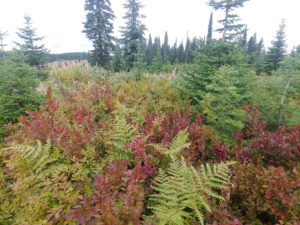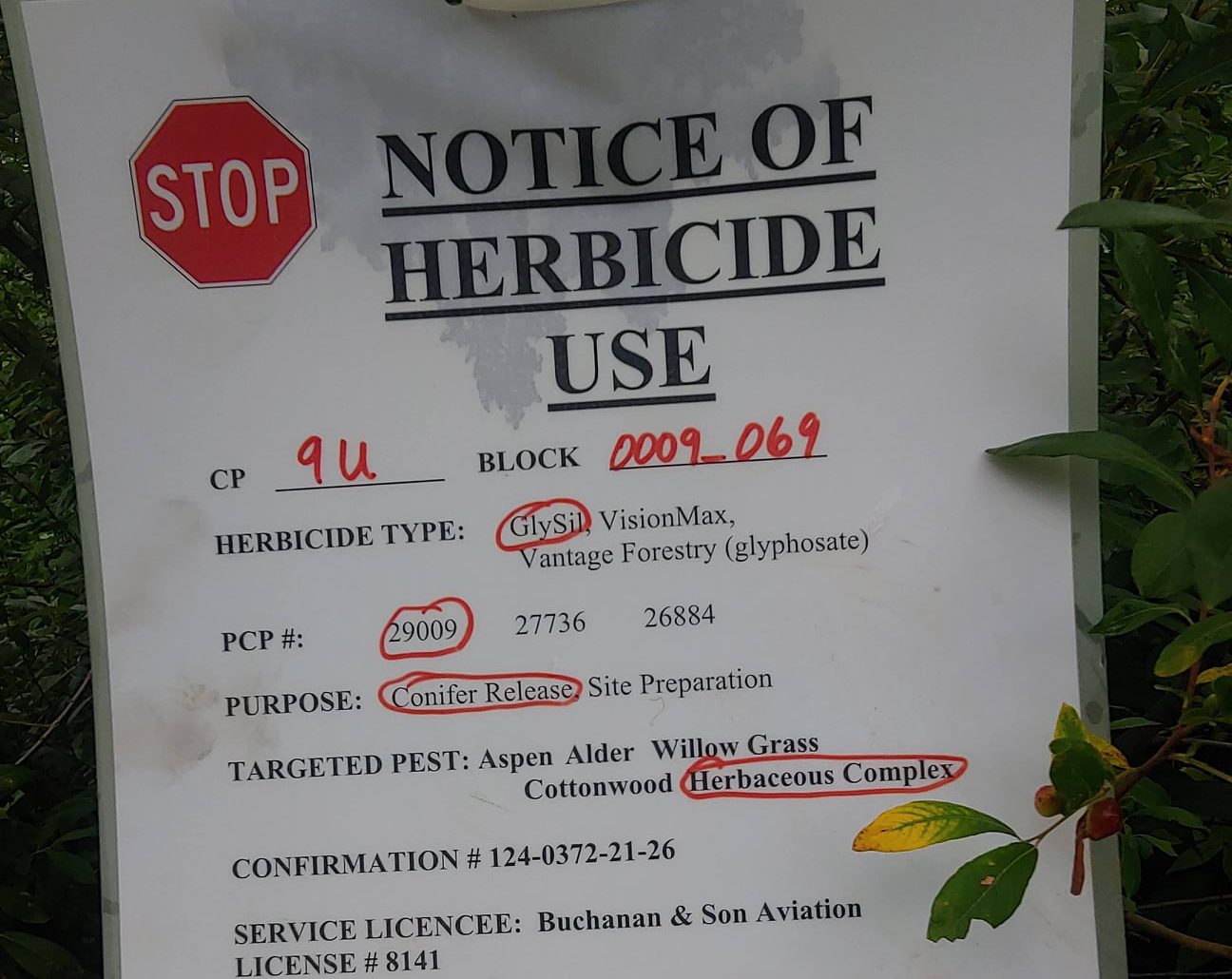The owner of a local Foraging and Wildcraft company by the name of Moose Mushrooms and Mud is sharing concerns over herbicide spraying activity happening Northeast of the city.
Jennifer Cote says she recently came across signage that indicates it had been sprayed with the glyphosate formulation, “GlySil”, at two cutblocks that she regularily uses to scout for edible berries, mushrooms, and other natural food sources for her business.
The signage says to avoid the area for 72 hours.
Cote says foraging for huckleberries is very popular with her clientele, but this spraying activity is compromising her ability to work.

“There’s so much up there, and it can’t be touched. It really frustrates and saddens me,” says Cote, “I went to two locations with hundreds of pounds of huckleberries and highbush blueberries. If those two areas were sprayed, I’m sure there were more. If I can’t get huckleberries from these locations, my inventory for future wildcraft lessons will be impacted for sure.”
Now Cote has to begin searching for other areas that huckleberries grow in that haven’t been sprayed, which she says will cost her more time and gas money.
She adds that when she and her clients go out to forage for food in the wilderness, they’re looking for natural foods, but this spraying activity is compromising her ability to work.
“When I go out in the forest I want natural foods but with all these spraying programs and the Glyphosates, they can stay in the environment for a long period of time and you pick your food it might not be as natural as you thought it was,” she stated.
Three UNBC researchers conducted a study to determine how long glyphosate can remain in a variety of plant species and published their work in April.
They collected plant tissue to map out how glyphosate residue quantities change over time according to species, plant tissue type, and climate regime and found glyphosate residue can remain in some tissue types for up to 12 years.
“There is more research coming out saying after an area has been sprayed that Glyphosate can stay in the environment for years to come so when you go back to an area after, like maybe a year or two you could still be picking plants or berries that Glyphosates,” Cote said.
Cote says she isn’t the only one being impacted by the spraying, and says many other people participate in foraging in the areas being sprayed as well.
“More and more people need to be aware of this and the forestry practice needs to change. I’m never against the logging industry or the lumber industry but just the forest management practices need to be changed and updated and new policies need to be put in place.”
Something going on in the Prince George area you think people should know about?
Send us a news tip by emailing [email protected].






